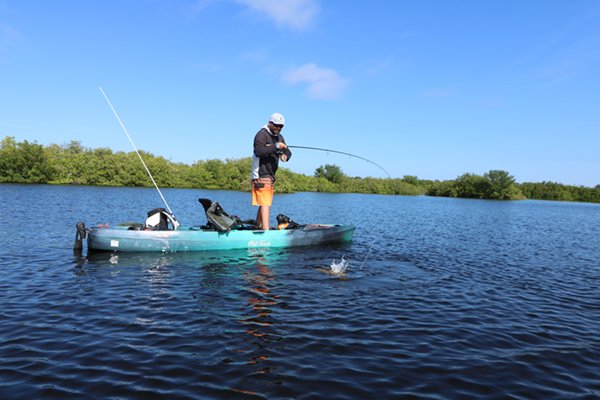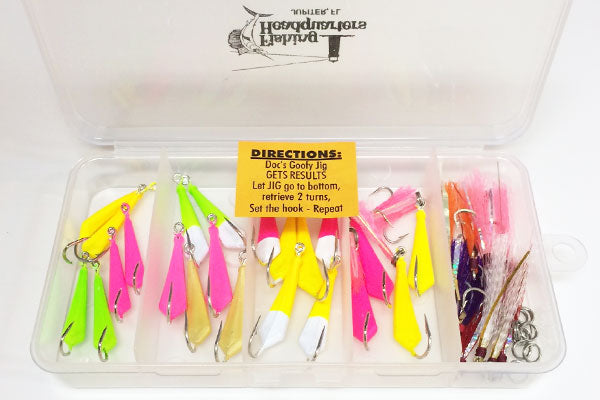Live bait is often the best choice when it comes to catching big fish or large numbers of fish. But it is not a guarantee. Not only do you need to select the correct bait you also need to rig it correctly. Rig your bait the wrong way, and it will swim at the wrong depth, provide a less productive action, or otherwise appear unnatural. It is learning how to present live bait that can be as essential as learning which bait to use.
Why live bait?
Artificial baits and lures are popular, and they produce fish, but their popularity has less to do with how well they work than with the ease of use. While an artificial that imitates live bait can fill a creel, you are still relying on something to try. Sometimes it works, and other times the lure can be a disappointment. With live bait, there is no imitation, no trickery. If you select the correct bait, you are typically offering what the fish are currently feeding on. It's just a matter of getting it to react when placed in front of them. How you hook the bait becomes very important.
Jaw Hook the Bait
One of the more common methods of hooking bait is through the jaw or lip. You can accomplish this in one of two ways; running the hook up and out the upper jaw or running it up through the lower jaw and out the upper jaw. The first is preferred for larger baits as it allows more of the hook to remain exposed. The latter is preferred with smaller baits that otherwise may rip free on the cast. Some anglers find the jaw hook to be better than other methods when using circle hooks, although it often depends on the bait used. I want to note that hooking the bait through the upper lip allows the baitfish to open its mouth and continue circulating fresh, oxygen-filled water through its gills. Ultimately, this equates to healthier, friskier baits that will live longer.

Nose Hook Baits
Aside from the through the jaw method hooking bait through the nose or nostrils is probably the most common presentation. This method does not restrict natural movement, allows the baitfish to swim near the surface (where gamefish usually hunt for them), and limits the risk of drowning. A bait rigged in this manner will survive and remain active for a long time. Smaller baits are hooked from one side to the other, either directly through the nostrils or the bridge directly behind it. With more substantial bait sources and circle hooks, anglers will often opt to use a bridle, which allows the hook to remain exposed.

Back or Dorsal Fin
Sometimes every fish in the area is interested in your bait, even striking any chance they get, but you still fail to get a hook set. Often, hooking them in the dorsal fin or back can alleviate this problem. Plus, hooking the bait in this area causes it to swim in a down-facing manner and increases its panic or distress response. Both changes in characteristics increase the chance a gamefish will be attracted to the area. In contrast, the hook placement increases the odds of hooking up even on short strikes.

Throat
Have you ever wondered how to rig a live bait for bottom fishing? If so, we have some tips to help you catch more fish in the deeper depths. Inserting the hook through the throat area (just behind the bottom edge of the gill plate) from one side to the other, you will cause the bait to swim deeper. This initial set up will place the bait at mid-water column areas, perfect for mingling amongst school of baitfish or around a rock, pilings, etc. Want it a little deeper? Add a sinker before your leader, and the bait will swim frantically just off the bottom. Add or subtract leader length to adjust how far off the seafloor, the presentation is made.
Rear or Tail
Another method of getting a bait to swim deeper (Especially pinfish) is to hook it near the tail or anal fin. As with the throat rig, the bait will swim more profoundly, and specific depth is controlled by adding weight. The difference is that this bait will swim forward as if it's trying to escape, which can be especially useful if trying to explore structure outside the casting range. The simple solution is to pass the hook through the body from one side to the other. In the area between the tail and anal fin. Here is an excellent video demonstration on how to hook a live mullet, you can use these techniques with any baitfish:
Threaded
If you are fishing wrecks, reefs, along bridge piers, etc. it is hard to beat this rig. However, it is a bit more complicated than other methods. Set up bait by finding the anal vents, thread your hook into the vent, and forward through the body cavity & out near the throat (final placement will vary based on hook/bait size). The result should be familiar; it is how most soft plastic swimbaits are rigged. This bait will swim with its head up and dart frantically, which will further entice strikes. Any strikes that do occur are sure to result in a hookup thanks to the hook being mid-body.
Conclusion
There are many different ways to rig or hook both live and dead baits. Use the suggested rigging tips above and try them in different scenarios or situations. You'll be surprised how switching it up can increase your catching odds. Do you have a preferred way that you like to hook your baits? Comment below and let us know, again there is no one right way to rig bait, get out there, try new things, and have FUN!
P.S. Pilchards AKA greenbacks are also one of the most popular live baits in Florida, watch as we show you how to rig greenbacks the proper way:




